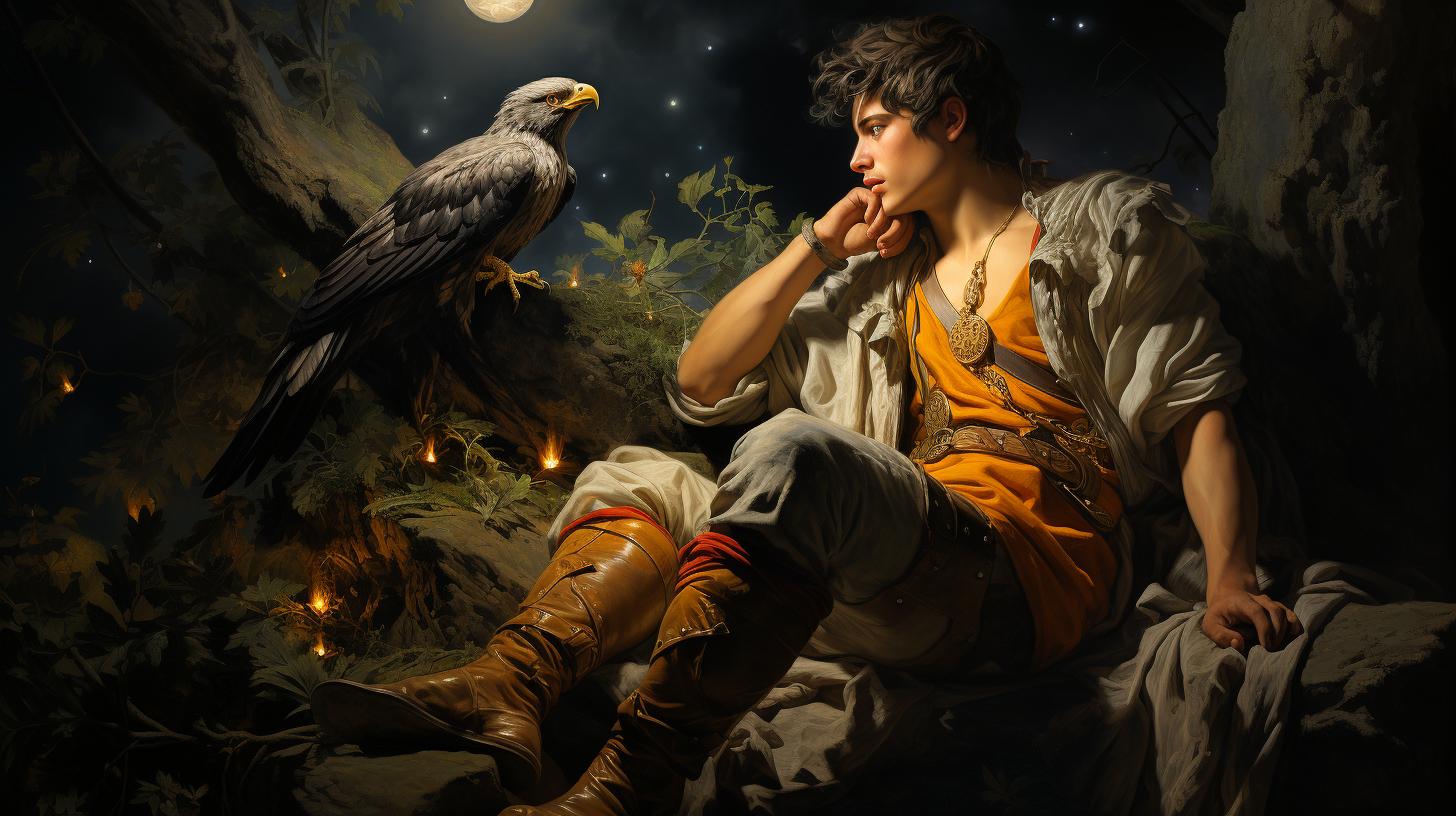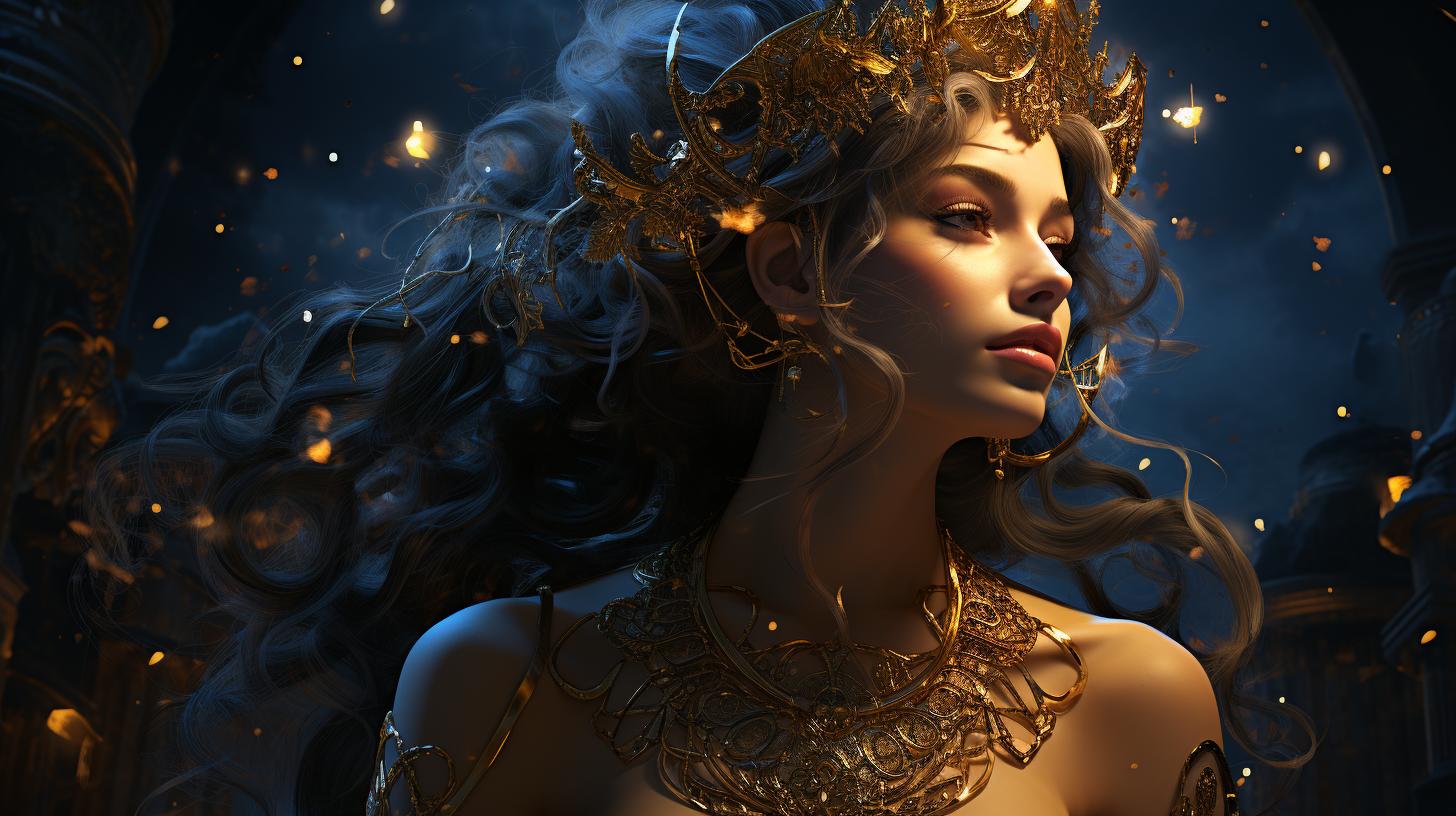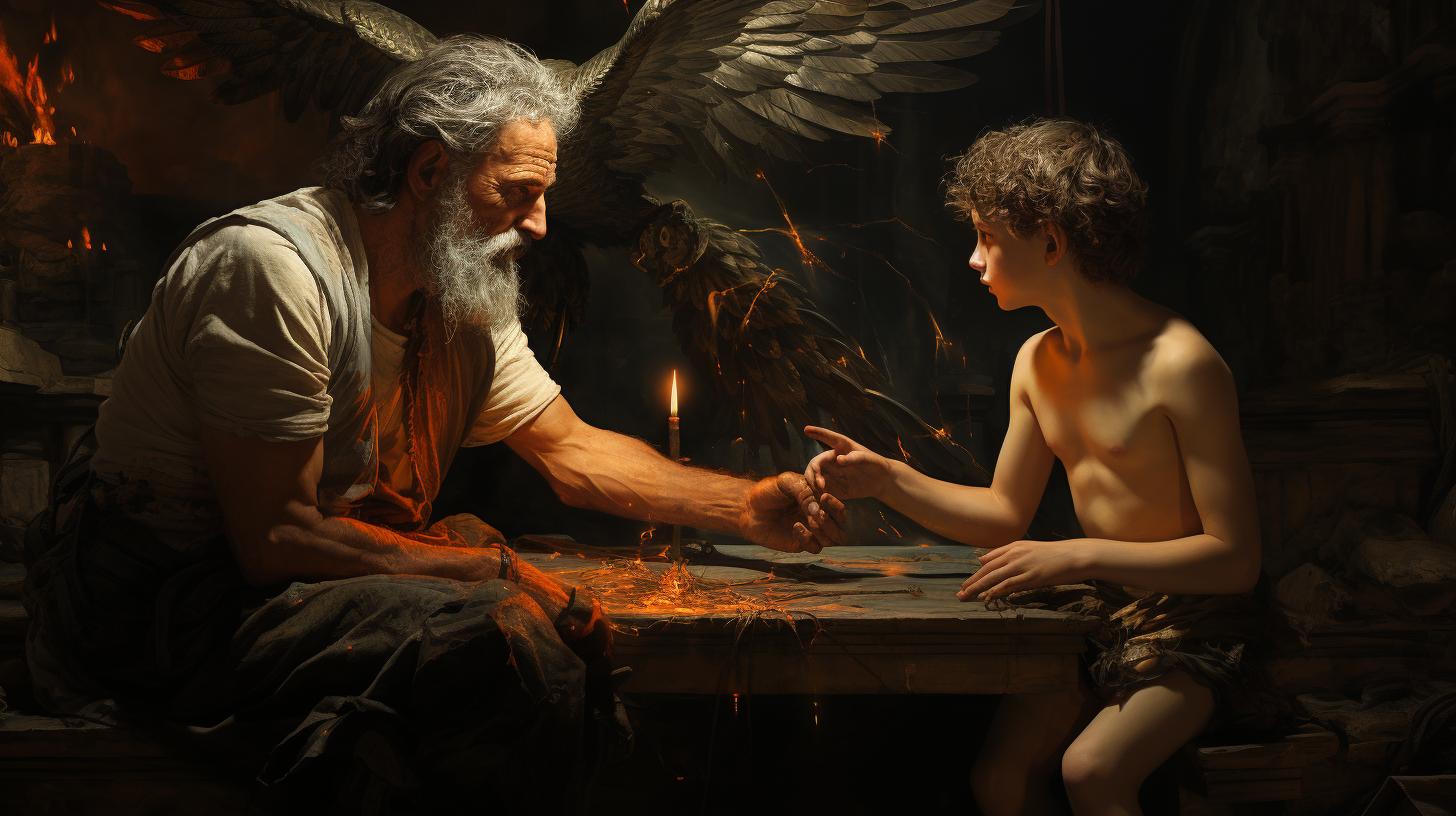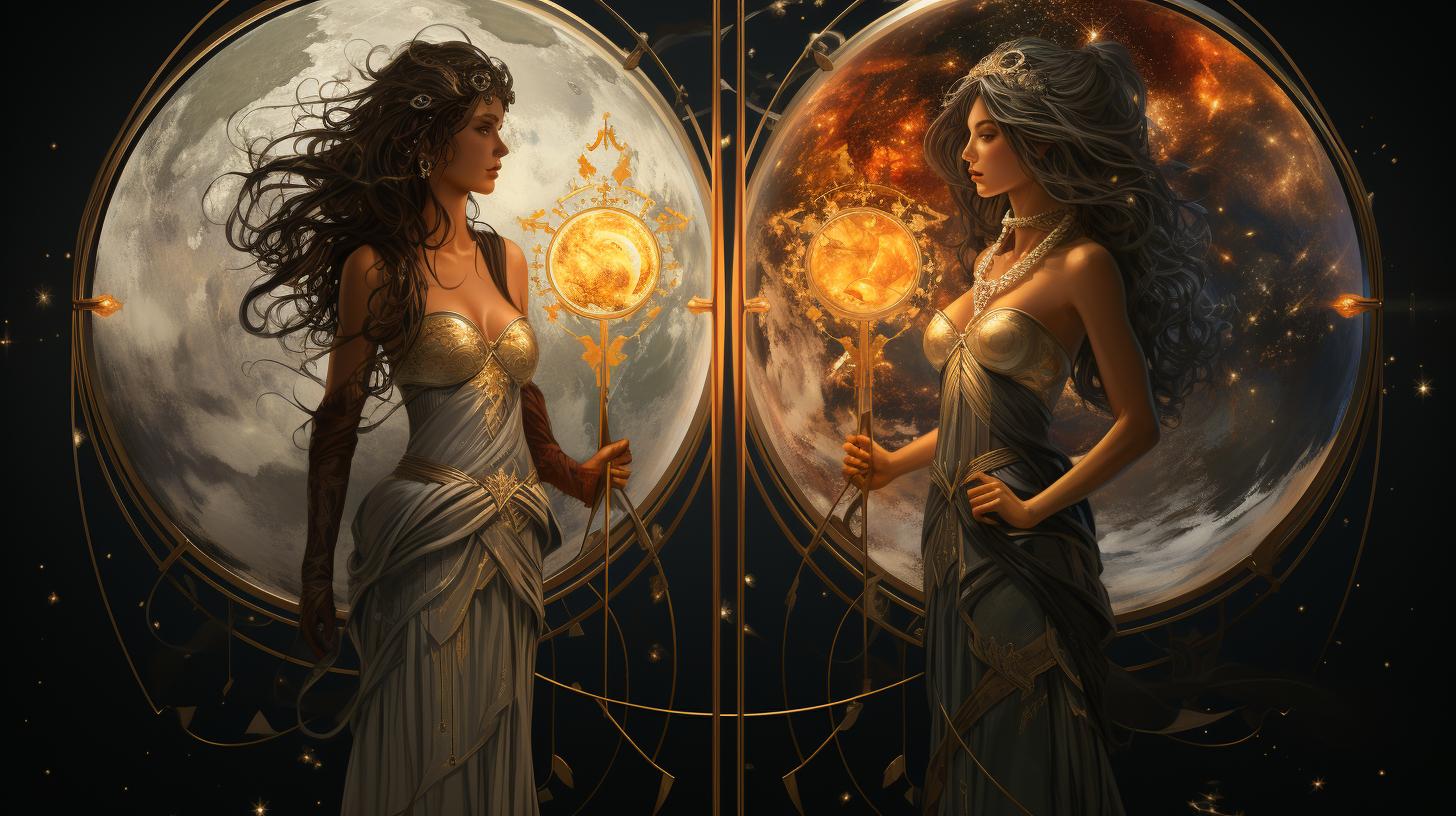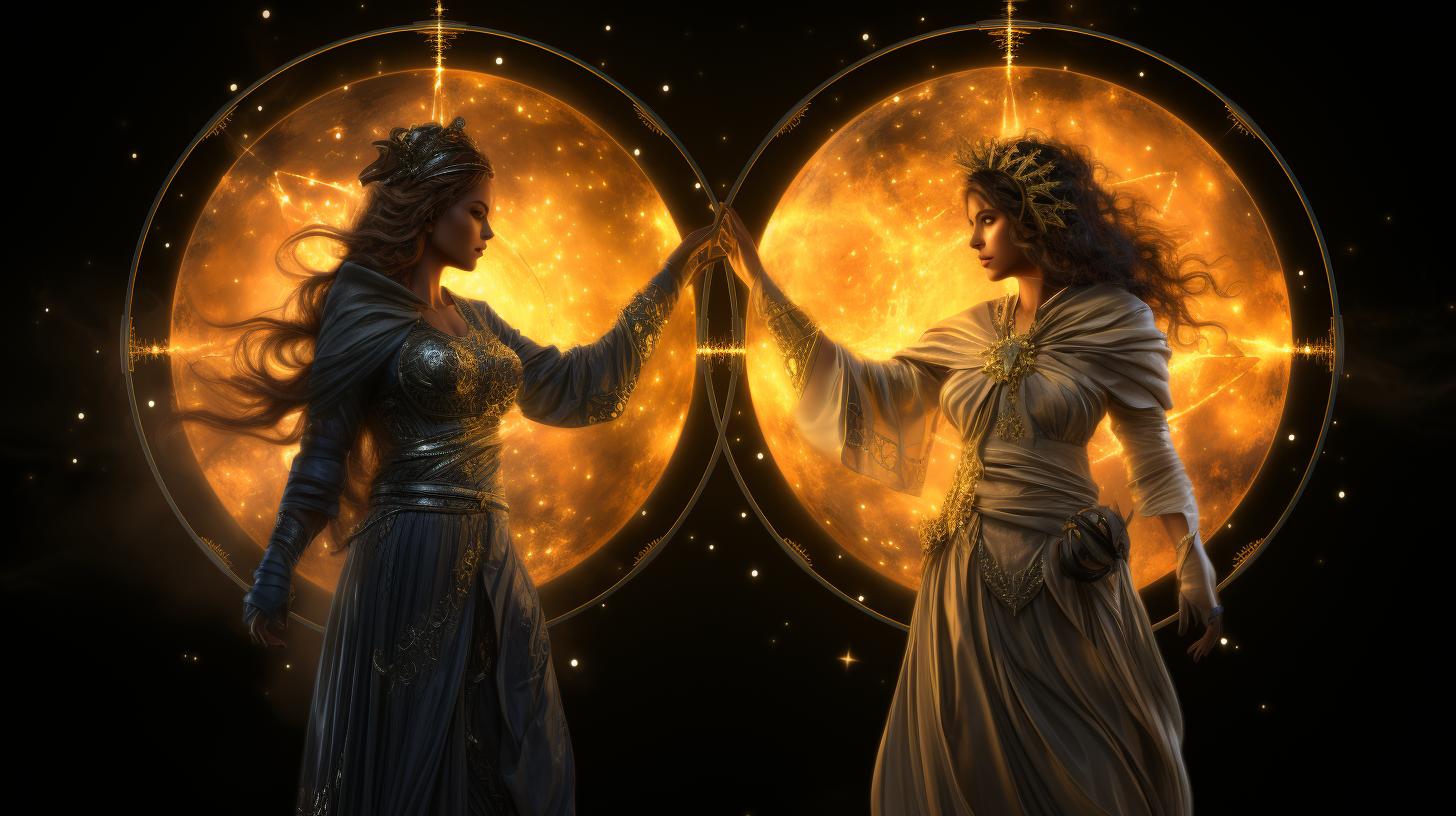The Mythical Origins of Ganymede
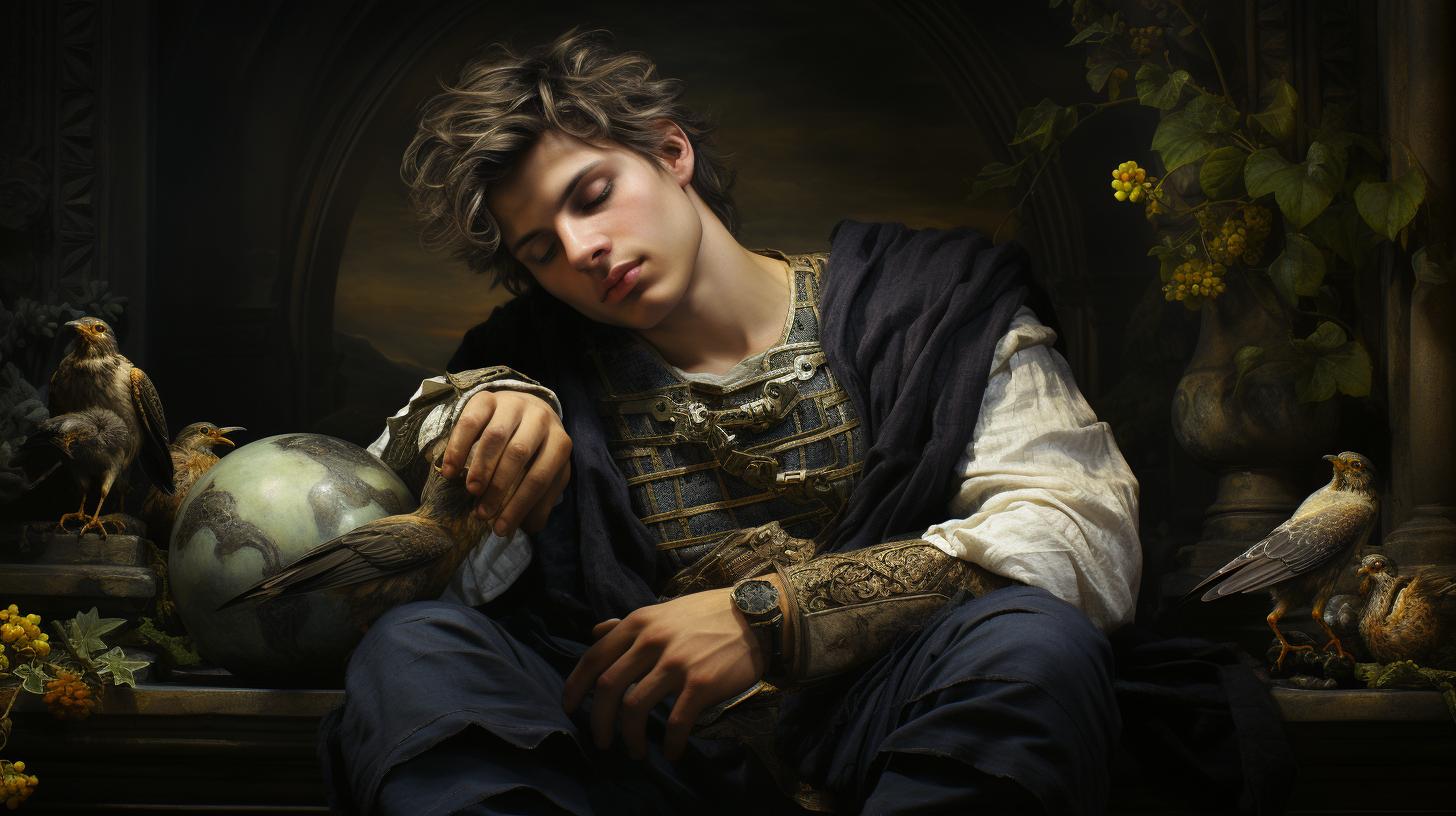
Ganymede, in Greek mythology, was a remarkably beautiful youth. He was taken by Zeus to Mount Olympus as his personal cupbearer and lover, causing conflict with Hera. Ganymede’s story has been depicted in art throughout history, exploring themes of beauty, desire, and power.
He is associated with the constellation of Aquarius. Additionally, Ganymede’s myth holds significance in ancient and queer history, shedding light on societal attitudes towards same-sex relationships. Explore the enigmatic tale of Ganymede and its multifaceted interpretations.
The Enigmatic Beauty of Ganymede
In Greek mythology, Ganymede was renowned for his unparalleled beauty, captivating all who laid their eyes upon him. His exquisite features and allure were said to surpass that of all mortals and even enticed the admiration of the gods themselves.
Legends surrounding Ganymede portray him as a symbol of physical perfection and ethereal charm. His radiant appearance fascinated both mortals and deities alike, making him an enigmatic figure in Greek mythology.
Stories of Ganymede’s beauty spread far and wide, becoming the topic of whispers and legends. His irresistible allure stirred feelings of desire and longing in anyone who beheld him, captivating even the most stoic of hearts.
Ganymede’s captivating appeal was not confined to mortal realms; the gods themselves were enthralled by his splendor. The divine beings, with their immortality and vast power, were captivated by Ganymede’s exceptional beauty, which was deemed unparalleled even among the countless enchanting creatures in the mythological realm.
Despite the mystery that shrouds Ganymede’s origins, there is no doubt that his beauty left an everlasting impression on the mythology of ancient Greece. His enigmatic allure continues to captivate the imagination of artists, writers, and those who delve into the fascinating world of Greek mythology.
The Mythical Origins of Ganymede
Different Versions of Ganymede’s Parentage
In Greek mythology, Ganymede’s parentage is a matter of debate. Some sources suggest that Tros and Callirhoe were his parents, while others attribute his birth to Laomedon or Ilus.
Regardless of his lineage, Ganymede was undeniably blessed with incomparable beauty and allure that even captivated the gods themselves.
Ganymede as a Shepherd in Troy
Prior to his remarkable encounter with Zeus, Ganymede lived a humble life as a shepherd tending to his father’s cattle in Troy. Little did he know that his destiny would soon take an unexpected turn, propelling him into the realm of the divine.
It is fascinating how an ordinary shepherd boy would eventually become a central figure in the pantheon of Greek mythology.
Zeus and Ganymede: A Divine Encounter
Zeus, the mighty ruler of the gods, found himself captivated by the unmatched beauty of Ganymede. This led to an extraordinary divine encounter that forever changed the fate of the young shepherd from Troy.
Zeus’ Decision to Take Ganymede
In a bold and decisive move, Zeus chose to whisk Ganymede away to Mount Olympus. The king of gods, in the form of an eagle, carried Ganymede to serve as his personal cupbearer and, some say, as his lover.
This act elevated Ganymede from a humble shepherd to a cherished member of the divine court.
Ganymede’s Immortality and Eternal Youth
Zeus, recognizing Ganymede’s irresistible charm and undying beauty, bestowed upon him the gifts of immortality and eternal youth. These extraordinary blessings ensured that Ganymede would eternally preserve his youthful allure, becoming an object of desire even among the gods.
Ganymede as Zeus’ Personal Cupbearer and Lover
With his newfound role as Zeus’ cupbearer, Ganymede became responsible for serving the gods ambrosia and nectar, the divine elixirs of immortality. This intimate position allowed Ganymede to witness the most intimate conversations and secrets of the gods.
However, the nature of their relationship, whether purely platonic or romantic, remains a subject of speculation and debate.
- Some interpretations suggest a deep love and mutual affection between Zeus and Ganymede, portraying their connection as one of romantic and erotic nature.
- Others argue that their relationship was purely mentorship, with Zeus guiding and mentoring Ganymede in matters divine and worldly.
- Regardless of the nature of their bond, Ganymede’s role as Zeus’ cupbearer solidified his position as a cherished companion and confidant.
Zeus’ decision to elevate Ganymede to such heights stirred the jealousy and anger of Hera, Zeus’ wife and sister.
She resented Ganymede’s presence as he replaced her own daughter, Hebe, as the cupbearer of the gods, further fueling her fury and exacerbating the tensions in their divine marriage.
Hera’s Jealousy and Anger
Within the realm of Greek mythology, Hera, the wife of Zeus, harbored deep resentment and jealousy towards Ganymede.
This section explores the confrontation between Hera and Ganymede and delves into the alleged erotic relationship that intensified Hera’s wrath.
Replacing Hebe: Hera’s Confrontation with Ganymede
In Greek mythology, Hebe, Hera’s daughter, held the esteemed position of being the cupbearer to the gods. However, Ganymede’s arrival threatened Hebe’s role, stirring Hera’s jealousy to its core.
Consumed by anger and feeling replaced, Hera confronted Ganymede directly.
During their encounter, Hera’s jealousy became apparent as she unleashed her fury upon Ganymede, questioning his worthiness to serve as the gods’ cupbearer.
Her relentless criticisms aimed to diminish Ganymede’s status and undermine his connection with Zeus.
This clash of emotions between Hera and Ganymede symbolizes the power struggles often found in Greek mythology.
The myth highlights the complex dynamics and conflicts that arise in the divine realm.
The Alleged Erotic Relationship between Zeus and Ganymede
Beyond Hera’s jealousy due to Ganymede’s usurping role, there are suggestions of an erotic relationship between Ganymede and Zeus. This speculation further fuels Hera’s anger, accentuating her feelings of betrayal.
The alleged intimacy between Zeus and Ganymede adds a layer of complexity to their relationship, blurring the lines between mentorship, desire, and love. Whether this aspect of their bond was consensual or exploitative remains a topic of debate; however, its presence amplifies Hera’s ire, intensifying her opposition towards Ganymede.
The portrayal of Ganymede and Zeus’ alleged relationship sheds light on the fluid boundaries of desire in ancient Greek society. It provides insight into the acceptance, albeit limited, of same-sex relationships during that era.
Through Hera’s jealousy and anger, the myth of Ganymede addresses themes of power, possession, and the delicate balance within divine relationships. It serves as a reminder that even the gods are not immune to human-like emotions and conflicts.
Ganymede in Art: Beauty, Desire, and Power
Ganymede’s captivating story has long served as a subject of inspiration for artists, who sought to depict his beauty, desire, and the powerful dynamics surrounding his encounters. Paintings and sculptures throughout history have captured the essence of Ganymede’s myth, exploring various interpretations and reflecting the artistic trends of different periods.
The Representation of Ganymede in Paintings
Artists from different eras have portrayed Ganymede in their paintings, capturing his allure and the emotions evoked by his story. These artworks reveal his youthful beauty and the desire he aroused in both gods and mortals.
The brushstrokes convey a sense of longing, highlighting the forbidden and erotic nature of Ganymede’s relationship with Zeus.
Ganymede in Sculptures
Sculptors, too, have been captivated by Ganymede’s myth, translating his allure into three-dimensional masterpieces. Marble and bronze sculptures portray his graceful form, emphasizing his youthful features and the sensuality of his encounters with Zeus. These sculptures often depict Ganymede in a delicate and vulnerable manner, further enhancing the themes of desire and power.
Exploration of Beauty, Desire, and Power by Renaissance and Baroque Artists
The Renaissance and Baroque periods witnessed a particular fascination with the themes of beauty, desire, and power. Renowned artists such as Michelangelo, Leonardo da Vinci, Peter Paul Rubens, and Caravaggio delved into Ganymede’s myth, using their artistic skills to portray the complex dynamics between gods and mortals.
Their works showcased the intensity and sensuality of Ganymede’s tale, inviting viewers to contemplate the links between desire, power, and the pursuit of beauty.
In summary, the captivating myth of Ganymede has been a recurring motif in the world of art.
Paintings and sculptures have skillfully depicted his beauty and explored the themes of desire and power, capturing the essence of his myth. The Renaissance and Baroque periods, in particular, witnessed a profound exploration of these themes by artists who sought to convey the complex dynamics surrounding Ganymede’s encounters.
Through their art, they invite us to reflect upon the interplay between beauty, desire, and power in the timeless tale of Ganymede.
Ganymede and the Constellation of Aquarius
The mythical figure of Ganymede is closely associated with the constellation of Aquarius. In Greek mythology, Ganymede became the cupbearer of Zeus on Mount Olympus, pouring water from a jar.
This association is depicted in the constellation, symbolizing Ganymede’s role as Zeus’ personal cupbearer.
Aquarius, the Water Bearer, is one of the oldest recognized constellations and holds significant astronomical and astrological importance.
It is visible in the northern hemisphere during specific seasons, captivating observers with its unique formation of stars.
According to ancient mythology, Ganymede’s position as the cupbearer of the gods is immortalized in the stars, serving as a reminder of his beauty, allure, and divine connection.
The constellation of Aquarius stands as a testament to the enduring legacy of Ganymede and his renowned role as the cupbearer of the gods.
- Constellation: Aquarius
- Symbolism: Water Bearer
- Associated Mythology: Ganymede, Zeus’ cupbearer
The presence of Ganymede within the constellation of Aquarius reflects the cultural and artistic significance attributed to his mythological tale.
It serves as a celestial representation of the beauty, desire, and power associated with Ganymede in Greek mythology.
Ganymede’s Relevance in Ancient and Queer History
Exploring the story of Ganymede goes beyond the realm of mythology, touching upon the understanding of ancient sexuality and its historical significance in queer narratives. This section delves into Ganymede’s contribution to ancient sexual dynamics and sheds light on the enduring impact of his story in queer history.
Ganymede’s Contribution to the Understanding of Ancient Sexuality
Ganymede’s story provides valuable insight into the practices and norms of ancient Greek and Roman societies. As the myth suggests, relationships between older men (such as Zeus) and young boys (like Ganymede) were not uncommon and were known as pederastic relationships.
While the modern understanding of such relationships may raise ethical questions, it is crucial to approach this topic from a historical perspective. In ancient Greece and Rome, pederasty was viewed differently, often seen as a way to mentor and educate young boys, building social and political connections.
The story of Ganymede reflects the acceptance and occurrence of these relationships, shedding light on ancient attitudes towards same-sex relationships and their role in ancient societies.
The Historical Significance of Ganymede in Queer Narratives
Throughout history, Ganymede’s story has been influential in shaping queer narratives.
The myth offers a glimpse into the history of diverse sexual and romantic relationships, challenging conventional notions of love, desire, and gender roles.
Ganymede has become an iconic figure in queer culture, representing themes of youthful beauty, desire, and the complexities of power dynamics in relationships.
His tale has inspired and resonated with countless individuals, artists, and writers, offering a historical reference point for exploring diverse expressions of love and desire.
- Ganymede’s story celebrates the beauty and desirability of youthful male figures, challenging societal norms of attractiveness and gendered ideals.
- Artworks inspired by Ganymede, such as paintings and sculptures, have become important symbols of queer identity, influencing the representation of same-sex desire and relationships throughout art history.
- Ganymede’s story continues to inspire and empower queer individuals, encouraging self-acceptance, celebrating diverse forms of love, and challenging societal boundaries.
In conclusion, Ganymede’s myth holds a significant place in ancient and queer history.
By examining his contribution to the understanding of ancient sexuality and his impact on queer narratives, we gain valuable insights into the complexities of human relationships, love, and desire across different cultures and time periods.
.

